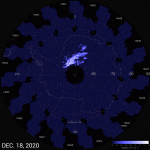
Tuesday, January 12th, 2021
Summer in Antarctica is marked by days in which the Sun never sets, balmy temperatures that hover as high as freezing, and electric-blue clouds of ice. NASA’s Aeronomy of Ice in the Mesosphere mission (AIM) spotted the summer’s first noctilucent, or night-shining, clouds on Dec. 8, 2020. In the days that followed, the fine wisps
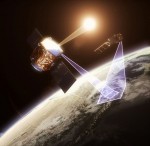
Monday, December 7th, 2020
Teledyne e2v, part of the Teledyne Imaging Group, will supply infrared detectors for the UK-led climate change Traceable Radiometry Underpinning Terrestrial and Helio Studies (TRUTHS) mission, which aims to establish an SI-traceable space-based climate and calibration observing system to improve confidence in climate-change forecasts, often referred to as a standards laboratory in space. Announced in

Monday, November 23rd, 2020
Human-produced noise and light pollution are troublesome to our avian neighbors, according to new research from a team at California Polytechnic State University, published Nov. 11, 2020 in Nature. Using NASA satellite data, the researchers got a bird’s-eye view of how noise and light negatively affected bird reproduction in North America. The team also discovered
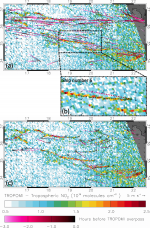
Tuesday, November 10th, 2020
Maritime transport has a direct impact on air quality in many coastal cities. Commercial ships and vessels burn fuel for energy and emit several types of air pollution as a byproduct, causing the degradation of air quality. A past study estimated that shipping emissions are globally responsible for around 400,000 premature deaths from lung cancer

Tuesday, October 27th, 2020
The size of the ozone hole over the Antarctic fluctuates on a regular basis. From August to October, the ozone hole increases in size, reaching a maximum between mid-September and mid-October. When temperatures high up in the stratosphere start to rise in the southern hemisphere, the ozone depletion slows, the polar vortex weakens and finally

Monday, October 12th, 2020
Africa Wildlife Tracking (AWT) is using ORBCOMM’s advanced satellite IoT technology to track and monitor animals of all sizes to support their conservation efforts. With the added threat of the COVID-19 pandemic and the need to supply local populations with food, poaching is likely to increase, making ORBCOMM’s IoT solutions more important than ever in

Monday, September 28th, 2020
Conducting a study in North West Siberia, researchers found that tundra vegetation regenerated rapidly after a major landslide event in 1989. Two decades later, differences in the vegetation of the landslide area and the areas surrounding it have evened out, but even after 30 years, the vegetation of the landslide area is nowhere close to

Tuesday, September 15th, 2020
A La Niña climate pattern has developed and is likely to persist through winter, according to an advisory issued by NOAA’s Climate Prediction Center. La Niña—translated from Spanish as “little girl”—is a natural ocean-atmospheric phenomenon marked by cooler-than-average sea-surface temperatures across the central and eastern Pacific Ocean near the equator, the opposite of El Niño
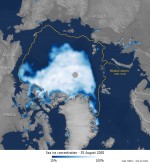
Monday, August 31st, 2020
During the middle of 2020, the Arctic has experienced alarmingly high temperatures, extreme wildfires and a significant loss of sea ice. Although hot summer weather is not uncommon in the Arctic, the region is warming at two to three times the global average—impacting nature and humanity on a global scale. Observations from space offer a
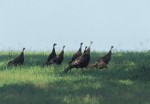
Monday, August 17th, 2020
When planning hunting seasons and other conservation efforts to protect wild turkeys, conservationists have long depended on forecasts of breeding success. In recent years, however, these estimates have been increasingly off the mark, with populations of the largest game bird in North America consistently smaller than expected. A 2016 Missouri Department of Conservation (MDC) survey
There are no upcoming events.
